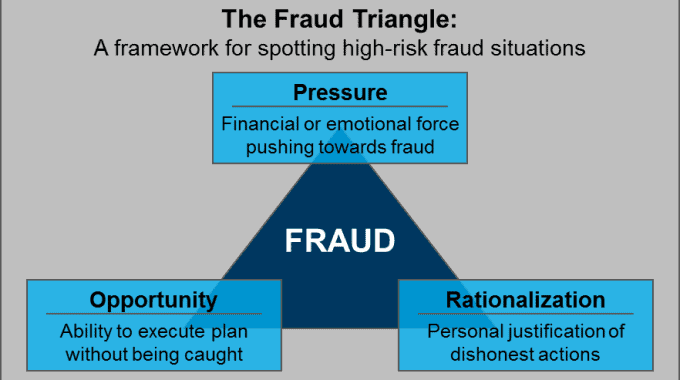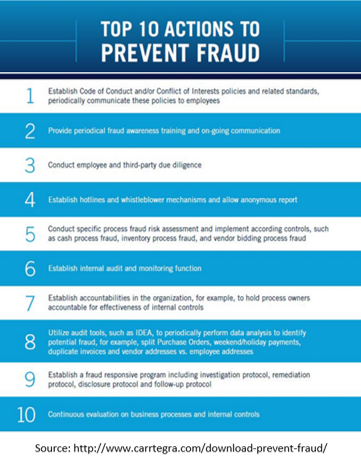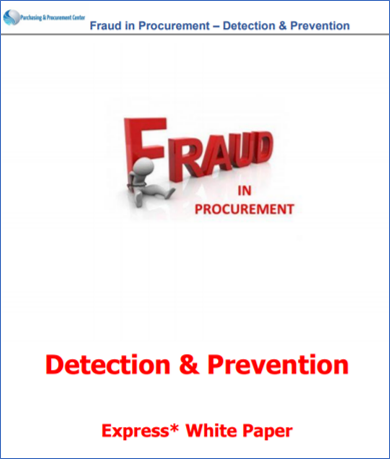Procurement Fraud Detection & Prevention with 2 Real-Life Examples!
Quick Summary: While Many Might Think that Only Dishonest People Commit Procurement Fraud, the truth is that under the 'right circumstances' almost anyone will commit fraud! Read on to find out when people commit procurement fraud with 2 Examples & 10 Actions Anyone Can Take to Prevent Fraud at Work.
How Much Is Lost Due to Fraud?
Overall estimates by The Association of Certified Fraud Examiners (ACFE) state that companies lose up to 5 percent of revenue to fraud each year - that amounts to $3.7 trillion on a global scale.
Corporate fraud investigators strive to eliminate fraud at corporate organizations. The scale can get seen if a typical organization loses 5% to fraud each year. A ten-billion-dollar company loses five hundred million in revenue that directly impacts the share price.
Examples of Corporate/Procurement Fraud!
Corporate & Procurement frauds can be of many types. You can best understand it with some two situational examples, as explained here.
Example 1
In a corporate office, a manager responsible for computers made a deal with a PC manufacturer’s account representative. The Account Representative convinced him not to negotiate a discount. As a result, the Account Representative got his bonus, and he then shared half of the bonus with the Manager.
Situations like these may seem harmless but small amounts of fraud add up. Impacts may be visible in the organization's share price. Corporations know this and are watching for fraud.
Example 2
A corporate employee may set up a fake supplier (for example- say Paperdraft) in the organization's Enterprise Resource Planning (ERP) system. The company pays invoices to Paperdraft's bank account, a bank account owned by the employee's brother. The transactions may be in small amounts like 200 dollars in a month spread across multiple company departments to avoid suspicion.
The Fraud Triangle - Why Do People Commit Fraud?
The 'Fraud Triangle' originated from Donald Cressey's hypothesis on fraud. Donald Cressey conducted a study of fraud and found out three components common to those who commit fraud;
- Pressure - 68%
- Opportunity - 18%
- Rationalization - 14%.
He determined that majority (68%) commit fraud because of pressure, 18% when opportunity arises, and 14% percent rationalize fraud.

Here are some examples of the three common procurement fraud components:
Pressure:
An example of pressure is someone with gambling debts, and they need to find money as they don't have money else; they'll be in danger. Internal pressures can be putting pressure to succeed.
Opportunity:
A person in the position of authority and who may be less likely to be questioned may utilize the opportunity.
Rationalization:
Some people convince themselves that it is morally okay to commit fraud. Some may rationalize their actions by thinking that the company does not pay them what they're worth and justify their fraudulent activities.
10 Actions to Take to Prevent Procurement Fraud!
The truth is you cannot entirely prevent fraud, but you can reduce the probability of fraud occurring in your organization. All employees in an organization can help prevent fraud.
Below is a list of Top 10 Actions to Prevent Fraud. Here though we are including more details on 2 critical ways an organization can take the initiatives to prevent fraud.

2 Critical Ways to Prevent Fraud
1. Establish a Code of Ethics!
Research has shown that reminding people to be ethical near time to an opportunity to commit fraud reduces the likelihood of the fraud.
You can ask your employees to sign a ‘Code of Ethics’ every year.
2. Implement a Risk Register!
In this register, you can ask your employees to add risks they may come across.
For example, when an operational buyer spots a lack of separation of duties in any section like supplying section, creating new supplies in the system, and confirming receipt of deliveries, they could add the specific risk to the register.
Adding risks will help in addressing and mitigating future fraud actions. Employees will also be aware that there is a mechanism to deter fraud and adhere to the code of ethics.
*Download Your Copy of: Fraud in Procurement: Detection & Prevention Express* White Paper!
How Organizations Can Save Money, Improve Reputation & Promote an Ethical Workforce by Implementing Key Strategies
*Express White Papers are Short & to the Point with Practicable Advice. It takes less than 5 Minutes to Read, but the Brevity is the Antidote that the Busy Procurement Executives & Leaders Need Today.

